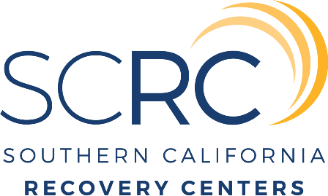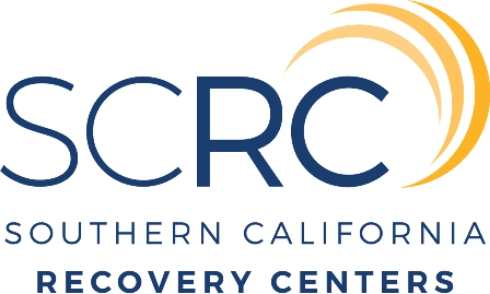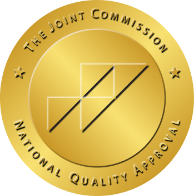Unveiling the Ice Epidemic in Southern California
Understanding Methamphetamine: A Dangerous Crystal
Methamphetamine, often recognized in its crystalline form as “crystal meth,” is a potent and highly addictive stimulant that affects the central nervous system. Derived from amphetamine, its use can lead to severe psychological and physical issues, further escalating into devastating addiction cycles. This dangerous drug, which has been a growing concern, significantly disrupts both cognitive and emotional functions, making comprehensive methamphetamine recovery services in Southern California essential for those affected. Understanding the drug’s composition and effects is crucial in combating its spread and assisting those on the path to recovery.
Why Southern California Is Vulnerable
Southern California, with its bustling metropolises and diverse population, is unfortunately an ideal environment for meth distribution and abuse. Factors such as economic disparities, high stress in urban areas, and a transient population contribute to the prevalence of methamphetamine use. Additionally, the region’s proximity to major trafficking routes exacerbates the issue, making it critical to focus on outpatient rehab solutions in Southern California. Understanding these elements provides insight into why this region remains vulnerable to the escalating meth crisis.
Statistics: Southern California’s Meth Problem In Numbers
The numbers surrounding methamphetamine abuse in Southern California are startling, shedding light on the magnitude of the problem. Data reveals that meth seizures by law enforcement agencies have increased dramatically, with substantial quantities being intercepted annually. Moreover, emergency room visits related to meth use have risen, indicating a pressing need for effective Southern California’s innovative rehab strategies. The statistics underscore the urgent requirement for targeted interventions, helping communities combat and decrease meth addiction rates effectively.
Breaking Down the Demographics: Who is at Risk?
The Role of Environment and Socioeconomic Factors
Socioeconomic elements significantly influence meth addiction trends in Southern California. Many facing economic hardships find themselves in environments that inadvertently promote substance abuse as a coping mechanism. High-stress communities, often characterized by unemployment, homelessness, and a lack of access to quality education, can increase vulnerability to meth addiction. Furthermore, the accessibility and affordability of methamphetamine make it even more perilous for individuals in such precarious socioeconomic situations. Understanding these factors is vital for crafting targeted interventions and personalized addiction treatment options for at-risk populations within Southern California.
Target Populations: Men, Veterans, and More
Specific populations, including men, veterans, and others, are prominently affected by meth addiction in Southern California. Men, often experiencing societal pressure and stigmatization, might turn to drugs for escapism or relief. Veterans represent another vulnerable group due to factors like PTSD and the challenges of reintegration into civilian life. Southern California Recovery Centers offer specialized programs for veterans’ recovery to address their unique needs in overcoming addiction. Tailoring recovery programs for men in different demographics is essential to mitigate the impacts of methamphetamine abuse effectively.
Age Matters: Young Adults vs Mid-Life Men
Age plays a critical role in the susceptibility to and experience of meth addiction. Young adults, particularly those in their 20s, might face peer pressure, exploration tendencies, or socio-economic challenges, making them prime candidates for addiction. Southern California provides recovery programs for men in their 20s to cater to these specific challenges. In contrast, mid-life men might struggle with career pressures, family responsibilities, or mental health issues like depression. Recognizing these age-specific challenges is key in designing effective recovery pathways that cater to the diverse needs of each age group, facilitating successful long-term recovery.
Innovative Recovery Approaches at Southern California Recovery Centers
A Male-Only Environment: Unique Benefits
Southern California Recovery Centers provide a distinct advantage by offering a male-only outpatient environment. This tailored setting eliminates distractions and allows for a more focused recovery process, addressing specific issues faced by men. Men often encounter societal pressures that require unique therapeutic approaches to ensure effective recovery. The support of other men who share similar challenges fosters a sense of camaraderie and mutual understanding, further enhancing the therapeutic experience. This environment prioritizes long-term care for men, recognizing the importance of tailored therapy in overcoming meth addiction and other substance-related challenges.
Trauma Work for Meth Addiction: EMDR and Beyond
Trauma plays a significant role in addiction, making it imperative to address underlying issues comprehensively. At Southern California Recovery Centers, the incorporation of modalities such as Eye Movement Desensitization and Reprocessing (EMDR) offers profound benefits. The role of EMDR in recovery programs demonstrates the effectiveness of this therapy in reducing distressing memories that often fuel substance use. Additionally, therapies including Seeking Safety and Somatic Experiencing facilitate a holistic approach to recovery, helping clients release trauma and build resilience. This trauma-focused care underpins the journey towards lasting sobriety, ensuring that past trauma does not derail recovery efforts.
Holistic Approaches: Integrating Vocational Skills and Life Skills
Southern California Recovery Centers emphasize a holistic recovery approach that integrates vocational training and life skills development. Recognizing that sobriety extends beyond abstaining from substances, the program cultivates skills crucial for re-entering everyday life and achieving personal goals in Southern California Recovery Centers. By focusing on vocational support, clients regain a sense of purpose and productivity, which enhances their confidence and commitment to sobriety. The integration of life skills prepares clients to handle daily challenges, fostering independence and self-reliance. This comprehensive approach ensures that individuals are equipped to maintain their recovery and thrive in all aspects of their lives post-treatment. These strategies significantly contribute to successful Customized Meth Recovery Success.
From Crystal to Clarity: The Treatment Journey
Customized Care Pathways: Personalized Treatments
Customized care pathways are the cornerstone of effective meth addiction recovery in Southern California. Every individual’s journey is unique, and Southern California Recovery Centers prioritize creating personalized treatment plans that reflect this individuality. By understanding each client’s specific needs, history, and challenges, professionals can tailor therapeutic interventions to promote meaningful change and healing. This personalized approach enhances the relevance of each treatment component and increases engagement and motivation, crucial elements in building a foundation for lasting sobriety. Moreover, this method acknowledges the complexity of meth addiction, recognizing that a one-size-fits-all approach is inadequate for effective recovery.
Comprehensive assessments form the basis of these customized treatments, allowing experts to identify underlying issues such as trauma or co-occurring mental health disorders. These insights inform the development of a holistic plan encompassing medical, psychological, and social dimensions of recovery, supporting clients at every step from detoxification to therapeutic interventions. By integrating multiple therapeutic modalities, such as EMDR, Seeking Safety Therapy, and Somatic Experiencing, Southern California Recovery Centers ensure that all facets of addiction are addressed, paving the way for each individual’s unique path to clarity.
Inside Inpatient Rehab and Detox at Dana Point and Carlsbad
Inpatient rehab and detox programs near Dana Point and Carlsbad offer critical resources for individuals embarking on the early stages of addiction recovery. The controlled environment of inpatient care provides the stability necessary for safe detoxification from methamphetamine. This phase is essential, as it allows clients to clear the substance from their system while receiving comprehensive medical supervision to manage withdrawal symptoms safely. The presence of skilled professionals ensures that any medical complications are promptly addressed, fostering a more comfortable and secure detoxification process.
Located in strategic regions, the addiction rehab near Dana Point, California, and the recovery services provided in Carlsbad cater to the diverse needs of residents in Southern California. These centers create a serene setting that supports patient focus away from daily stressors and temptations. The combination of state-of-the-art facilities and compassionate care aids in instilling hope and direction in individuals who feel overwhelmed by addiction. Additionally, the programs in these locations emphasize cohesive transitions from inpatient to outpatient services, ensuring continuity in recovery efforts as individuals progress from detox to ongoing treatment.
Continuity of Care: Ensuring Long-Term Success
Continuity of care is a pivotal element in the spectrum of addiction treatment, ensuring sustained recovery and preventing relapse. Southern California Recovery Centers meticulously integrates this concept into the treatment process to ensure that individuals receive consistent support throughout their journey. Whether transitioning from inpatient detox at Dana Point and Carlsbad to outpatient programs or moving from therapeutic sessions to vocational training, seamless continuity is critical in maintaining the momentum of recovery.
Commitment to continuity of care in rehab involves dedicated case management and the retention of a consistent treatment team. This approach helps build trusting relationships between clients and therapists, which are crucial for addressing personal challenges and achieving therapeutic goals. By fostering a supportive and stable recovery environment, Southern California Recovery Centers focus on equipping individuals with the skills and resilience needed to navigate life’s complexities without resorting to drug use. Structured daily living routines, peer support groups, and ongoing therapy sessions play a significant role in consolidating recovery gains, ultimately leading clients towards long-term success and fulfillment.
The Future of Meth Addiction Recovery in Southern California
Predicting Future Trends and Challenges
As the dynamics of substance use and addiction evolve, predicting drug rehabilitation trends has become crucial. In Southern California, future trends might encompass increased emphasis on technology-driven therapeutic interventions and a broader push towards digital platforms for support and counseling. Keeping pace with these advancements, Southern California Recovery Centers are likely to integrate innovative methods to enhance accessibility and engagement, such as virtual reality therapy and telehealth options. These evolving trends present both opportunities and challenges, demanding that facilities remain adaptable without compromising the quality of care. Furthermore, understanding these trends prepares facilities to tailor their approaches effectively, ensuring comprehensive support is readily available for those embarking on their recovery journey.
The Role of Community and Support Networks
Community and support networks are indispensable in solidifying sobriety and fostering resilience among recovering individuals. In Southern California, grassroots movements and local organizations are expected to play a significant role in creating inclusive environments that support recovery. Southern California Recovery Centers emphasize building strong community ties that provide shared experiences, accountability, and encouragement. These networks assist individuals during treatment and facilitate sustainable recovery by offering a robust support system post-rehabilitation. By prioritizing connection and collective recovery efforts, communities become integral to reducing relapse rates and promoting lasting sobriety across the region.
Advocating for Policy Changes and Better Access
Advocating for policy changes is vital in enhancing the accessibility and quality of addiction recovery services. Efforts may include lobbying for expanded insurance coverage and government funding to ensure no individual is deprived of necessary treatment due to financial constraints. Southern California Recovery Centers remain committed to engaging policymakers in dialogues aimed at improving regulatory frameworks and reducing barriers to accessing holistic rehab programs, including those with an emphasis on integrated trauma work for addiction. By tirelessly advocating for these essential changes, recovery facilities can better serve diverse populations, ensuring equitable care is within reach for all seeking guidance on their recovery path.
Conclusion
Reflections on Recovery: Beyond Meth Addiction
Reflecting on the journey from addiction to sobriety at Southern California Recovery Centers highlights the transformative power of personalized and innovative treatment approaches. Meth addiction, particularly in Southern California, presents unique challenges that demand tailored recovery solutions. The focus on individualized care, such as integrating vocational training and life skills, equips individuals with tools for sustainable recovery. Additionally, trauma-focused therapies like EMDR and Seeking Safety comprise core components of the recovery process, addressing the psychological roots of addiction and fostering emotional healing. Beyond the direct impact of these treatments, they empower individuals to redefine their lives, embracing purposeful sobriety that extends beyond mere abstinence. Recognizing the effectiveness of trauma-focused care for recovery in shaping successful outcomes offers hope and direction to those seeking recovery.
Call to Action: Building a Supportive Community
Building a robust and supportive community is fundamental to amplifying the success of addiction recovery efforts in Southern California. Local involvement and collective advocacy are pivotal in ensuring that individuals have access to the necessary resources and encouragement throughout their recovery journeys. Community initiatives, support groups, and partnerships with rehabilitation centers create a network of accountability and shared experiences that bolster individual resilience. Southern California Recovery Centers are instrumental in fostering these environments, offering comprehensive resources tailored to diverse demographic needs, including recovery services provided in Carlsbad. Advocating for broader accessibility and the dismantling of systemic barriers to treatment is essential in reinforcing these efforts, allowing every individual the opportunity to reclaim their life. As we advance, the emphasis on community support and involvement will be crucial in reducing relapse rates and cultivating a recovery-oriented culture that champions health and transformation.
Frequently Asked Questions
Question: How does Southern California Recovery Centers address the unique challenges faced by men in meth addiction recovery, particularly those in their 20s and 30s?
Answer: Southern California Recovery Centers offers specialized programs focusing on the specific needs of men in their 20s and 30s. Recognizing the distinct pressures experienced by these age groups, such as peer pressure, career stress, and family responsibilities, our male-only outpatient programs provide a supportive environment that minimizes distractions. We integrate vocational skills and life skills development into our treatment plans to ensure that clients are working towards sobriety and are equipped to handle daily life challenges. Through tailored trauma work, including EMDR therapy, Seeking Safety Therapy, and Somatic Experiencing therapy, we address the underlying psychological factors that may contribute to addiction, fostering long-term recovery.
Question: What innovative approaches does the blog Decoding Meth Addiction Trends in Southern California Recovery highlight, and how are they applied at Southern California Recovery Centers?
Answer: The blog Decoding Meth Addiction Trends in Southern California Recovery highlights several innovative approaches employed by Southern California Recovery Centers, such as trauma-focused care, continuity of care, and the integration of vocational skills. Our programs are designed with the understanding that meth addiction affects cognitive and emotional functions, necessitating comprehensive therapeutic strategies. We employ EMDR therapy to help clients process trauma, and we emphasize the importance of community support networks to reinforce recovery efforts. Our approach includes structured daily living and focusing on developing life skills, ensuring that individuals are prepared for sustained sobriety.
Question: How does Southern California Recovery Centers utilize continuity of care to ensure long-term success in meth addiction recovery?
Answer: At Southern California Recovery Centers, continuity of care is a cornerstone of our treatment philosophy. We ensure seamless transitions from inpatient care, such as the programs at our Dana Point and Carlsbad facilities, to outpatient services. This continuity means clients receive consistent support from a dedicated treatment team familiar with their unique history and challenges. Our approach fosters strong therapeutic relationships, allowing for personalized drug treatment programs that adapt as individuals progress through recovery. Structured daily living routines and ongoing therapy sessions further support sustained recovery, helping individuals build resilience and reduce the risk of relapse.
Question: Why is Southern California particularly vulnerable to methamphetamine trends, and how does Southern California Recovery Centers address these challenges?
Answer: Southern California faces significant vulnerability to methamphetamine trends due to factors like economic disparities, urban stress, and proximity to major trafficking routes. At Southern California Recovery Centers, we take a comprehensive approach to these challenges by offering outpatient rehab options that provide immediate support and long-term strategies for sobriety. We emphasize personalized treatment that addresses the socioeconomic and environmental factors contributing to addiction, ensuring interventions are effective for the at-risk populations in this region. Our programs also focus on innovative meth addiction recovery methods, helping to mitigate the pervasive impact of methamphetamine on our communities.
Question: How does Southern California Recovery Centers integrate trauma work for addiction into their meth addiction recovery programs? How Southern California Recovery Centers Transform Trauma Work
Answer: We incorporate trauma work as a fundamental component of our meth addiction recovery programs at Southern California Recovery Centers. Understanding that trauma often underlies substance abuse disorders, our treatment includes therapies like EMDR, Seeking Safety, and Somatic Experiencing. These methods empower clients to process and release traumatic memories, reduce the psychological distress associated with these memories, and build emotional resilience. By focusing on trauma work for addiction, we not only address the symptoms of meth addiction but also tackle the root causes, paving the way for comprehensive healing and lasting sobriety.





